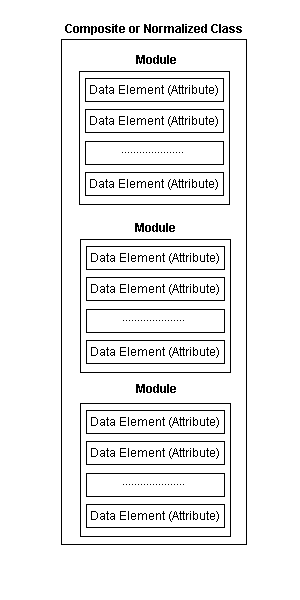Overview: Information Object Definitions
The Part PS 3.3 of the DICOM Standard specifies the set of Information Object Definitions (IODs) which provide an abstract definition of real-world objects applicable to communication of digital medical information. This standard was developed by American College of Radiology (ACR) and National Electrical Manufacturers Association (NEMA).
An Information Object Definition (IOD) is an object-oriented abstract data model used to specify information about Real-World Objects. An IOD provides communicating Application Entities with a common view of the information to be exchanged.
An IOD does not represent a specific instance of a Real-World Object, but rather a class of Real-World Objects which share the same properties. An IOD used to generally represent a single class of Real-World Objects is called a Normalized Information Object. An IOD which includes information about related Real-World Objects is called a Composite Information Object.
The illustration below shows the structure of an Information Object Definition. Each class consists of one or more modules, where each module consists of one or more elements. For details concerning Information Object Definitions, refer to the DICOM Standard.

For an example of a Class, refer to Class Example.
For examples of Modules, refer to Module Examples.
The following topics also pertain to Information Object Definitions:
Normalized and Composite SOP Classes
© 1991-2020 Apryse Sofware Corp. All Rights Reserved.
